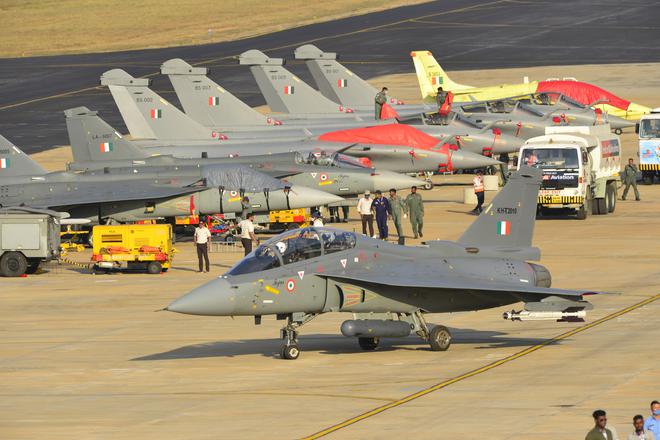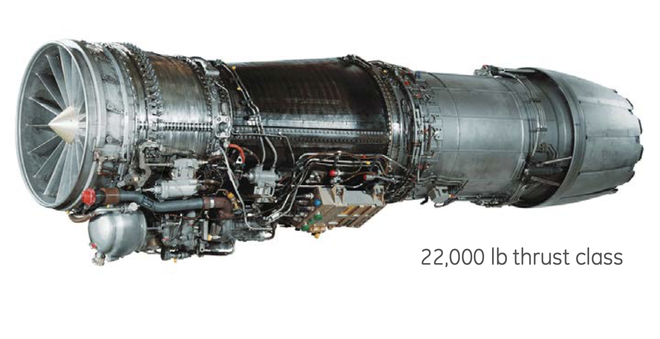The story so far: A mega defence deal for the manufacture of fighter jet engines in India is expected to dominate the agenda of Prime Minister Narendra Modi’s first state visit to the United States this week. According to sources, India and the U.S. have “almost” finalised details and the White House is set to sign off on the deal that will allow American manufacturing company General Electric (GE) Aerospace to share critical technology with Hindustan Aeronautics Limited (HAL) for the joint production of GE-F414 jet engines that will power indigenous Light Combat Aircraft (LCA) Tejas Mk-II.
The proposed agreement has evoked considerable interest in India and beyond, with experts terming it a significant step for bilateral defence and high-tech cooperation amid China’s growing influence and global technological dominance.
Tracing India’s quest for indigenous aero-engines
India’s pursuit of self-reliance and technological transformation in the defence sector stems from the necessity to deal with the dual threat along its borders and maintain strategic autonomy in the emerging world order.
Over the years, India has seen substantial accomplishments in various helicopter, missile and space programmes. India has also designed and built a fighter jet but hasn’t achieved much success in producing engines to power these aircraft.
The quest began in the 1960s with the country’s first indigenous fighter, HF-24 Marut. The aircraft was envisioned as a supersonic jet, but failed to achieve its potential for want of a suitable engine and was eventually phased out. A few decades later, India sanctioned the Kaveri programme to develop an indigenous military gas turbine engine for the ambitious LCA project. The programme went on for around 30 years and incurred an expenditure of more than ₹2,000 crore. However, it could not be integrated with the LCAs because it failed to meet the necessary technical requirements.
With Kaveri still a work in progress, India shortlisted American GE-F404 engines for LCA Tejas Mark-1 as an interim measure. In 2010, the Aeronautical Development Agency (ADA) selected the more powerful variant, F414 engines, to power Tejas Mark-2. . In a media release, the company stated that it would supply an initial batch of the selected variant and the rest will be manufactured in India under a transfer of technology (ToT) arrangement.

The deal, however, did not materialise due to U.S. domestic legislation and regulatory hindrances and remained on the back burner for over a decade.
As a sign of deepening ties and with an eye on China, the U.S. recognised India as a “major defence partner” in 2016, which paved the way for sharing of critical military equipment and technology. It sought to put India on par with NATO-member countries.
A new framework pushed by PM Modi and President Joe Biden last year to strengthen strategic technology partnerships and drive defence cooperation put the focus back on the GE-HAL deal. The National Security Advisers of India and the U.S. spearheaded discussions on the proposal during the inaugural meeting of the Initiative on Critical and Emerging Technologies (iCET) in Washington in January. In separate statements that followed, the Ministry of External Affairs (MEA) and the White House said the U.S. was reviewing a request for an expeditious review of GE’s licence applicationto produce jet engines in India for the LCA.
Successive high-profile meetings including bilateral talks between Defence Minister Rajnath Singh and US Secretary of Defence Lloyd Austin, and NSA Ajit Doval and his American counterpart Jake Sullivan were held in the run-up to PM Modi’s visit, adding to anticipation around the jet engine deal.
What will the deal include?
While there has been no official confirmation yet, senior officials from New Delhi and Washington have hinted at a possible collaboration on the co-production of F414 jet engines. Multiple media reports claim that the U.S. has agreed to transfer around 80% transfer of the tech value to India; which is unprecedented considering that America maintains strict controls overdomestic military technology and has never handed over such critical technological know-how to a non-ally in the past.
U.S. Ambassador Eric Garcetti told The Hindu earlier this month that America was “leaning in” to make sure that the Indian Air Force, Navy and domestic industry have the most exquisite technologies that exist. “And that’s a real commitment of faith, of this relationship and our future together. That’s something that really the U.S. hasn’t done before with any other country, not even our closest allies. And it reflects a confidence between our militaries, between our leaders, and between our people,” he said.
The deal is expected to be inked and announced by the time Mr. Biden hosts PM Modi on June 22, as per a Reuters report citing multiple people briefed on the matter. The agreement will, however, require final approval from the U.S. Congress before it is inked by the two leaders.
What are the features of the F414 engine?
India has shortlisted the F414-INS6 model for LCA Mk-II for the IAF, and the export market in the future. An advanced and more efficient version of the F404 engines conceived in the early ‘90s, F414 engines currently power the LCA Tejas.
At the time the deal was struck, in 2010, the aerospace giant said that the Indian variant will include a fully digital electronic system to control different aspects of the engine, known as the Full Authority Digital Engine Control (FADEC), along with added single-engine safety features customised to meet the country’s defence requirements.
The engine’s main specifications are:
1. An afterburner turbofan 154-inch long engine in the 22,000-pound (98 kilonewtons) thrust class — 35% more thrust than the F404 engines. The afterburner tech increases the thrust of a jet engine for short periods to improve an aircraft’s take-off, climb, and combat performance.
2. A thrust-to-weight ratio of 9:1, which is an indicator of aircraft propulsion. The higher an aircraft’s thrust-to-weight ratio, the higher its acceleration, excess thrust, and rate of climb.

3. Has low maintenance costs and boasts of unrestricted engine performance on demand with more than five million engine flight hours.
4. Is more reliable and has greater engine durability with a reduced life-cycle cost. The engine is designed to maximise time on wings, which is a measure of the operational reliability of an engine.
The F414 engines power several advanced, next-generation combat aircraft around the globe. Currently, these engines are operational in Boeing’s F-18 Super Hornet twin-jet fighters and Saab’s JAS 39-Gripen (Next Generation) single-engine combat aircraft and are being integrated into aircraft being built in South Korea. As per estimates, GE has produced F414 engines for F-18 Super Hornets at $3.71 million.
How crucial is the deal for India?
India will become the fifth country in the world to produce jet engines once the deal is sealed, joining the U.S., Russia, France and the U.K.. Besides boosting its military capabilities and growing defence manufacturing at a time when the world is reeling due to the impact of the Russia-Ukraine conflict, the agreement will help replace the fleet of ageing Russian fighters.
Experts predict a transformative impact on the aerospace and defence manufacturing industry since India plans to produce more than 350 fighter jets for its air force and navy over the next two decades. “The jet engine deal will take India’s capability in the aircraft industry to a new level, and I think from a U.S. perspective, it will mean jobs. The deal also sends a message to the Chinese that the relationship between India and the U.S. is not just a surface relationship and is getting deeper,” says Mukesh Aghi, president and CEO of the U.S.-India Strategic Partnership Forum (USISPF).
In a recent report, the U.S.-based Heritage Foundation termed the deal as mutually beneficial for both Washington and New Delhi. “The deal would bolster India’s capacity to field indigenously produced fighters with some of the most powerful and reliable engines in the class, saving decades of research and development costs.” The report adds that any advanced technology transfer “carries inherent risks, even with reliable strategic partners.”
“However, assuming that those risks can be sufficiently mitiga bted and that India is also invested in taking the relationship to new levels, the U.S. government should approve the transfer of the F414 engine technology to India,” it says.
Addressing India’s dependence on Russian imports, the report added, “Expanding the type and sophistication of the arms the U.S. is willing to sell to India may elevate the U.S. as an alternative to India’s traditional dependence on Russian hardware, particularly amid rising concerns about Russia’s strategic embrace of China, and growing questions about the quality, reliability, and capacity of a Russian defence industrial base increasingly strained by the Ukraine conflict.”







